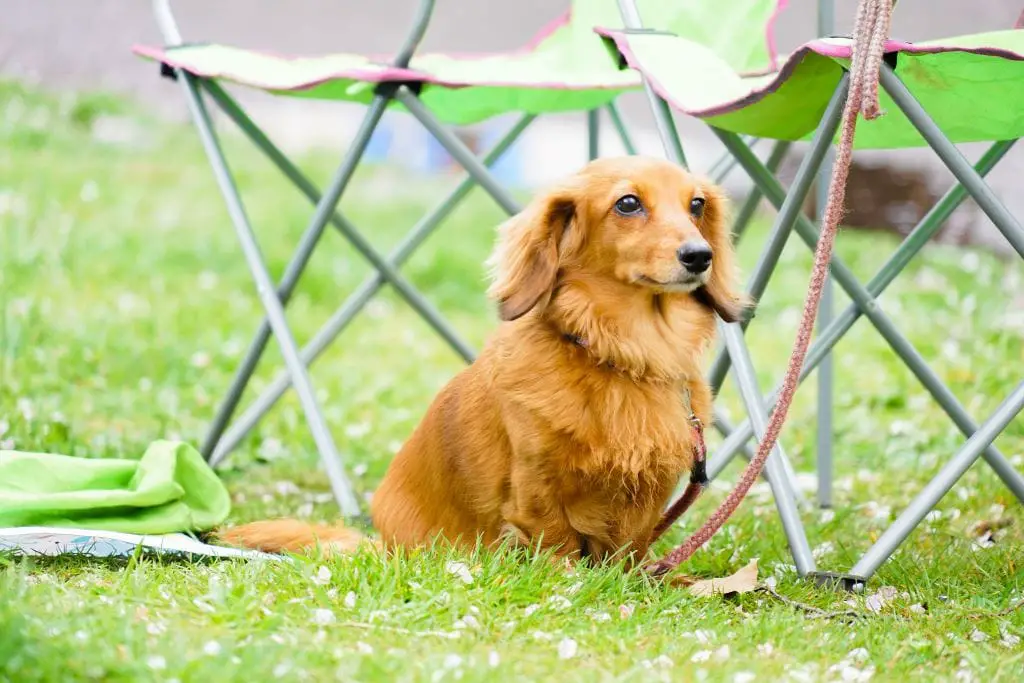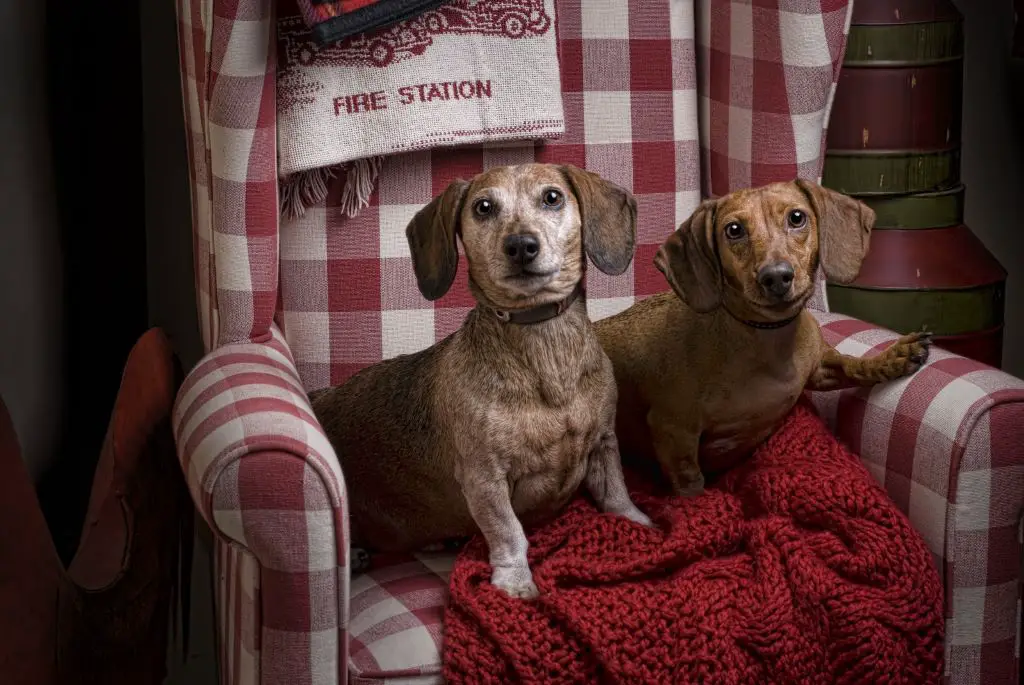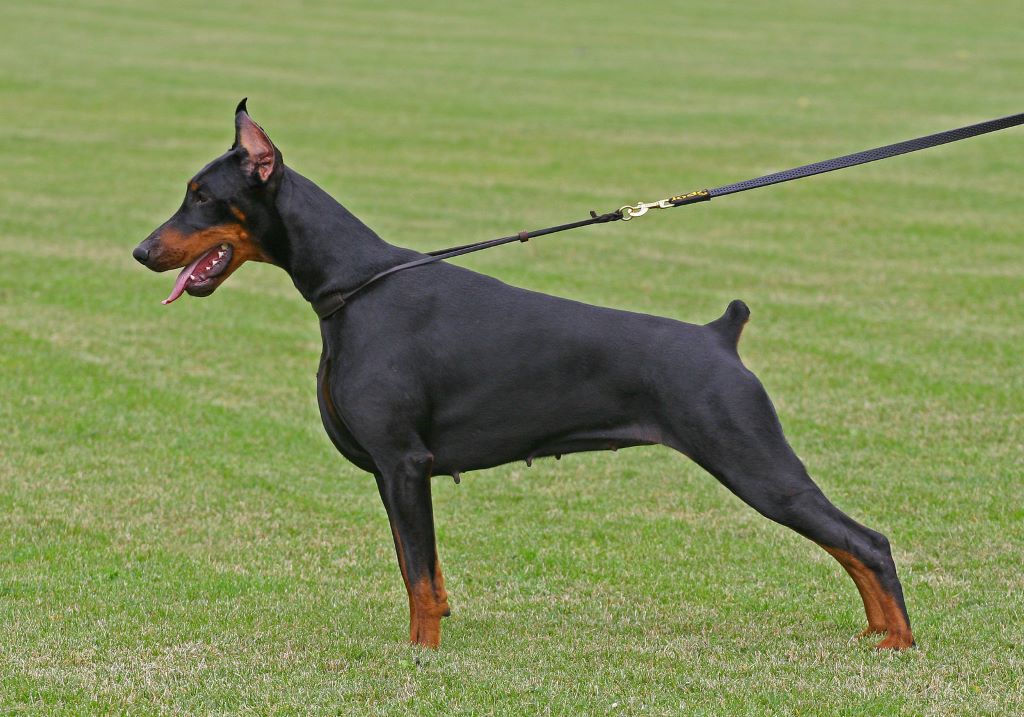Warning: Trying to access array offset on value of type bool in /home/u778996160/domains/dachshundtalk.com/public_html/wp-content/plugins/wp-word-count/public/class-wpwc-public.php on line 123
Warning: Trying to access array offset on value of type bool in /home/u778996160/domains/dachshundtalk.com/public_html/wp-content/plugins/wp-word-count/public/class-wpwc-public.php on line 123
There is a lot of confusion, even among breeders and veterinarians, about the genetics of miniaturization. Standard dachshunds do not have a “mini” gene that causes them to be smaller than their parents or other standard dachshunds. It is simply that some dachshund puppies are born smaller, typically between 1/2 and 3/4 the size of their parents. These puppies mature to full size if they are fed a proper diet and allowed to become healthy adults.
In some cases, a puppy who is born smaller may also have a different hair coat than its littermates or parents. Miniaturized dachshunds typically have a very soft, silky coat that is thin and short. Standard dachshunds used for breeding should not be chosen based on their size or hair coat, but instead must be chosen as excellent representatives of the breed in every way.
Miniature dachshund

How small will a miniaturized dachshund get? Miniaturization is not the same in every line of dachshunds. It can be anywhere from 1/2 the size of the parents up to 75% smaller than standard-sized parents. Males are more likely to be affected than females, and the degree of miniaturization is related to how small they will become.
There has been some debate as to whether breeders should try to correct this type of dwarfism. Some breeders feel that breeding smaller dogs is unethical and goes against everything we strive for with dachshunds–a long, low body; along, powerful muzzle; and a long, strong back. Miniature dachshunds tend to look more like Chihuahuas than the breed we love.
However, since this is not something that can be passed from generation to generation (like dwarfism in munchkins or corgis), it is not unethical to breed these smaller dogs. It is also unethical to breed large standard dachshunds with short legs, long backs, or other features associated with the condition.
Standard dachshund

A standard dachshund is a larger-sized dog with a long, strong body and a proportionate head. The ideal weight for a male should be between 30 pounds and 32 pounds when fully grown. Females should be in the lower range of 25 pounds to 28 pounds. The height at the shoulder for males should be between 13-1/2 inches and 15-1/2 inches, while females should be between 12-1/2 inches to 14-1/2 inches.
The coat of a standard dachshund should consist of rich red color closely fitted smooth hair with short bristles on the head and legs. The body should have a darker-colored saddle that is clearly defined with longer, lighter hair that forms the pants.
The standard dachshund coat should not belong and be shaggy, nor should it have a lot of feathering on the legs or tail. The only acceptable color for the body coat is red, while white markings are allowed on the forechest or toenails. A standard dachshund, like the miniature dachshund, should not be “pushed” to mature early or allowed to grow too quickly. They can suffer from bone and joint problems if they are fed the wrong diet or overfed by their owners.

Save Your Dachshund From Joint Problems!
Standard dachshund Or Miniature dachshund: The Differences

The Standard Dachshund and Miniature Dachshund are the same in every way except for their size. Still, there can be some variation due to genetics which is often seen in mixed breeds too. Keep in mind that it is much more likely that a dog will be the right size for its breed if both parents are of the same breed and size.
Standard Dachshund and Miniature Dachshunds: Size
The term “mini” has been used for decades as a marketing gimmick by some breeders, but there is no gene that causes mini it is still possible for a litter to include puppies of different sizes.
Some breeders also call the standard size “tweenie.”
Miniatures can be 1/2 to 2/3 the size of full-sized dachshunds and weigh between 4 and 9 pounds (2-4kg).
The Standard Dachshund is about 10-12 inches tall, while a Miniature Dachshund is typically less than 9 inches. A large litter of standard dachsie puppies may include a few smaller ones, but this does not mean that they are any less healthy or normal than their littermates.
It is worthwhile to note that the dachshund was originally bred as a hunting dog and was often used to chase badgers out of their holes. Since those early days, the breed has been selectively bred for many traits, one of which is size. During the dachshund’s breeding history, there were several sizes of dachshunds, including very small ones (5-7 pounds) and the huge “Giant Dachshund,” which weighed over 30 pounds. The breed has gradually become standardized to an average size of about 10-12 inches in height, however, and it would be detrimental to the breed to change this now.
Standard Dachshund and Miniature Dachshund: Temperament
As with all breeds, temperament can vary from one dog to another, but typical dachshund traits remain the same in both standard and mini sizes.
Although it is a small dog, the dachshund has an incredibly strong prey drive and will go after anything that moves. They do not generally get along well with cats, rabbits, or other small animals–nor should they! They are also very protective of their home and family and maybe suspicious of strangers until they get to know them.
Standard and miniature dachshunds require a good deal of exercise to remain healthy and well-behaved. They love to run and play outdoors, but they should always be leashed because their strong prey drive will cause them to chase any small animal that crosses their path. Dachshund owners should also make sure there are no holes in fences, as these dogs are notorious for escaping from the yard.
Although they may be stubborn and determined at times, dachshunds can make great family pets if they receive plenty of love and attention. If well socialized, dachshunds will often get along famously with children and other pets.
Standard Dachshund And Miniature Dachshund: Care
As with any breed, standard and miniature dachshunds require daily brushing to keep their coats in good condition. Their nails should be clipped regularly (try taking your dog to the vet or a professional groomer if you’re not sure how to do it yourself). Both versions of the dachshund should always be given access to freshwater. Miniature dachshunds typically need less food than standard size dogs and may even require a special diet if they become obese.
Standard Dachshund and Miniature Dachshund: Health
As with most breeds, the dachshund is prone to certain health problems, although both sizes are generally healthy.
Most dachshunds live 12-15 years or more if given proper care and attention.
However, Miniature Dachshunds can also suffer from some of the same inheritable diseases as their Standard Cousin. The most common issue with this breed is intervertebral disc disease (IVDD) which usually affects Dachshunds after the age of 3.
Conclusion
As you can see, the miniature dachshund is much like its larger counterpart in most ways. The two varieties of this breed are much more similar than they are different, and all the same, rules apply for both sizes. Any health or temperament problems that can arise in standard dachshunds are also present in the miniature variety. However, miniature dachshunds are usually more easily trained and less likely to become stubborn when compared with their larger counterparts!








